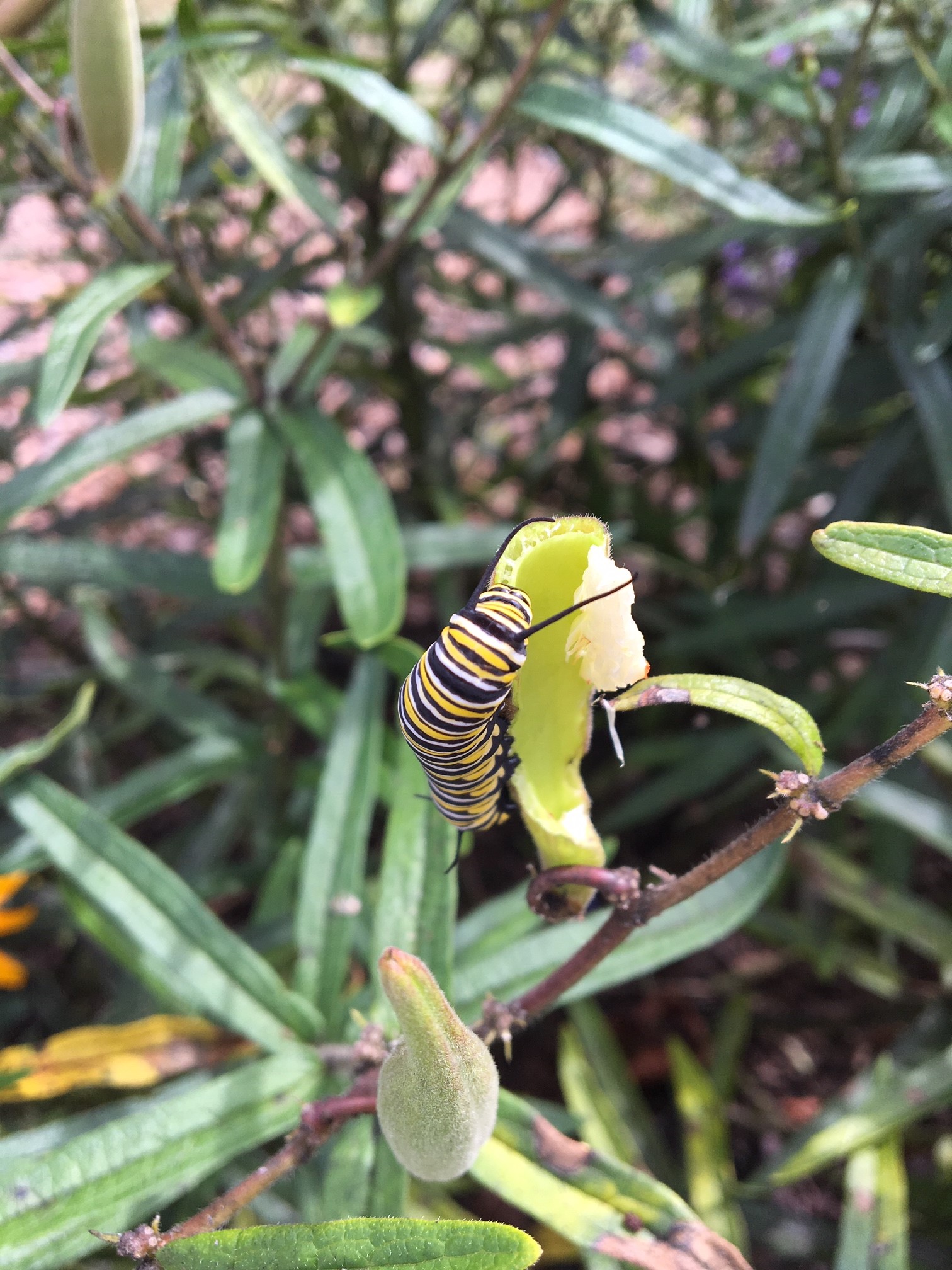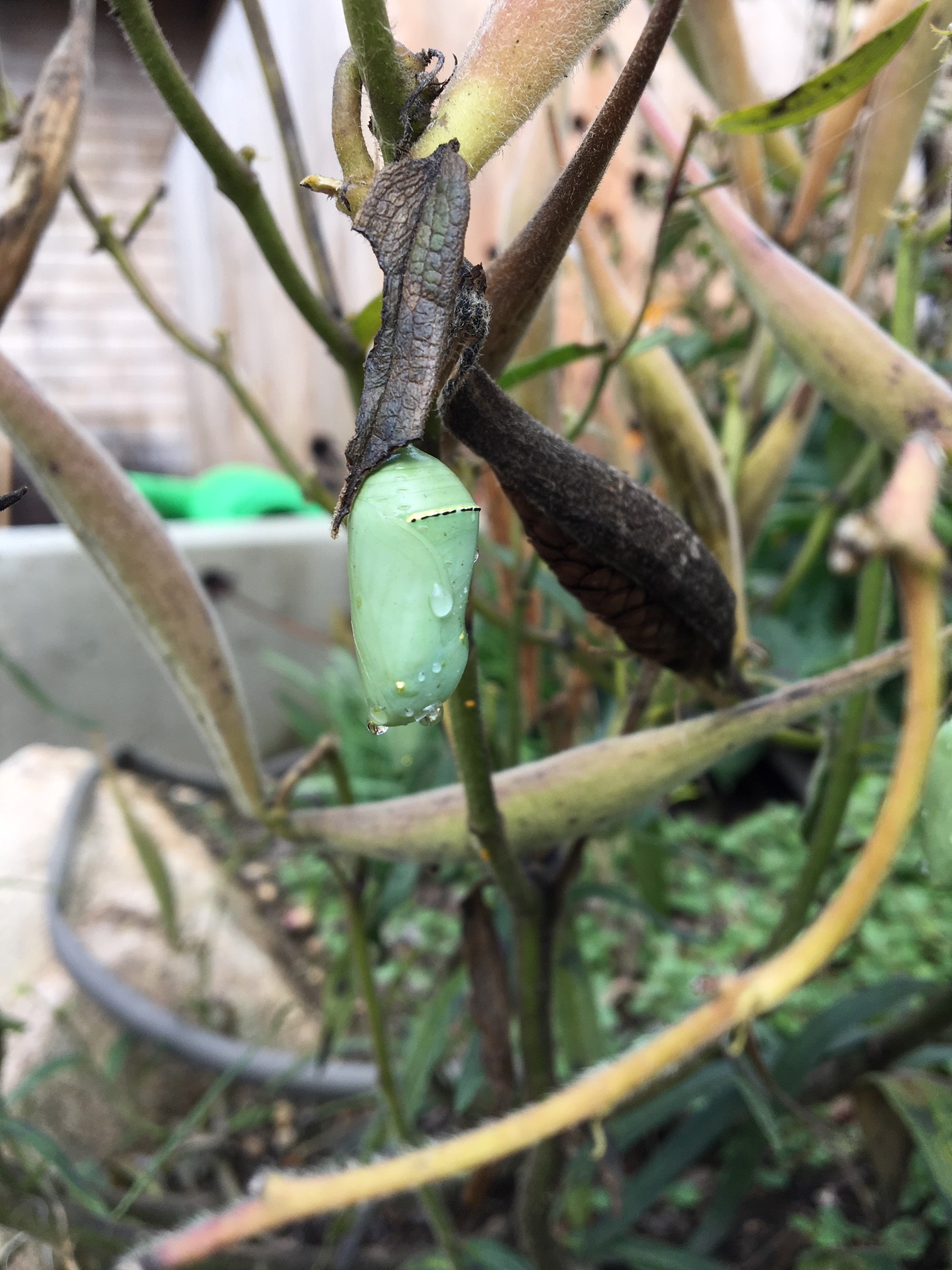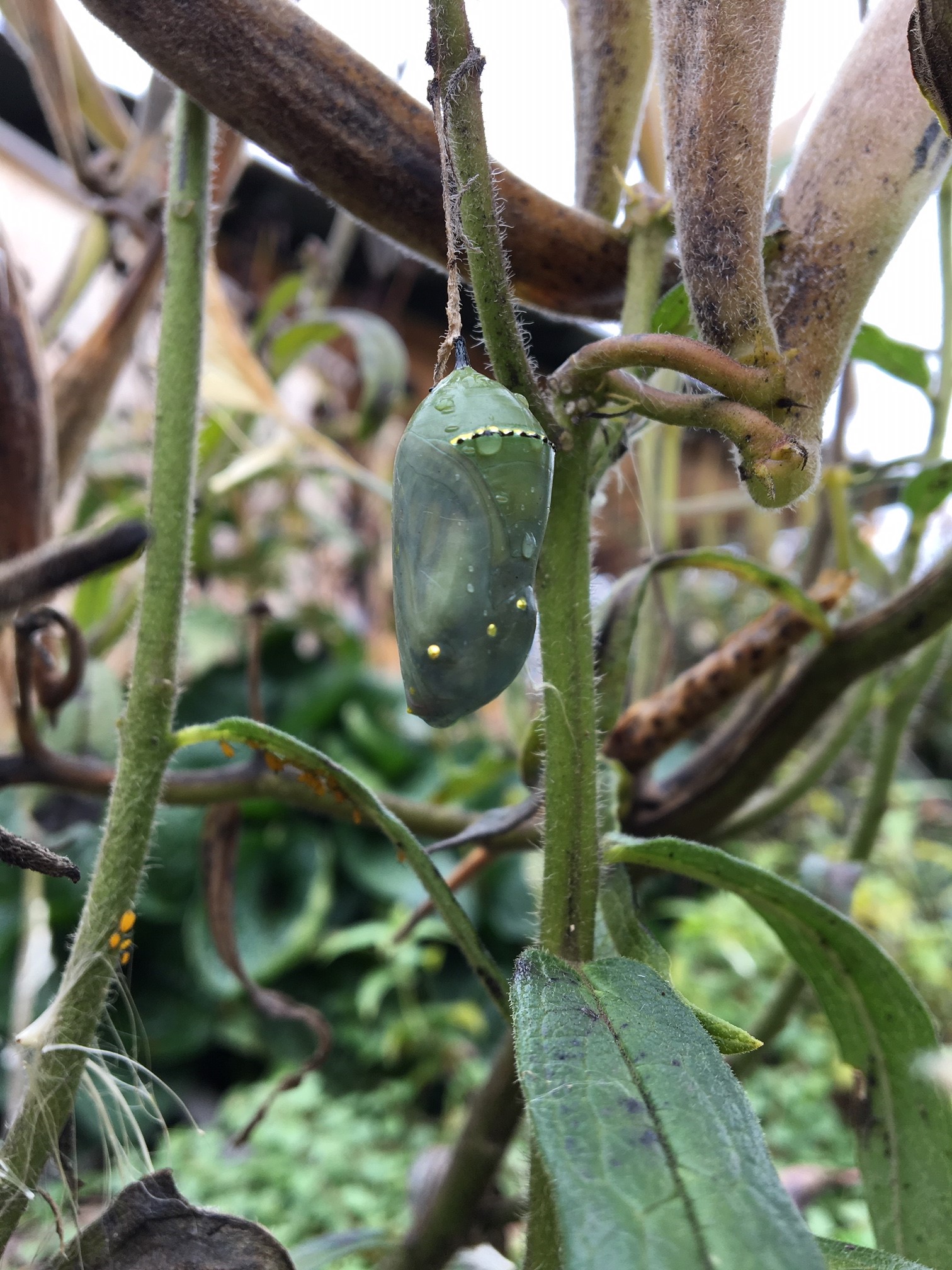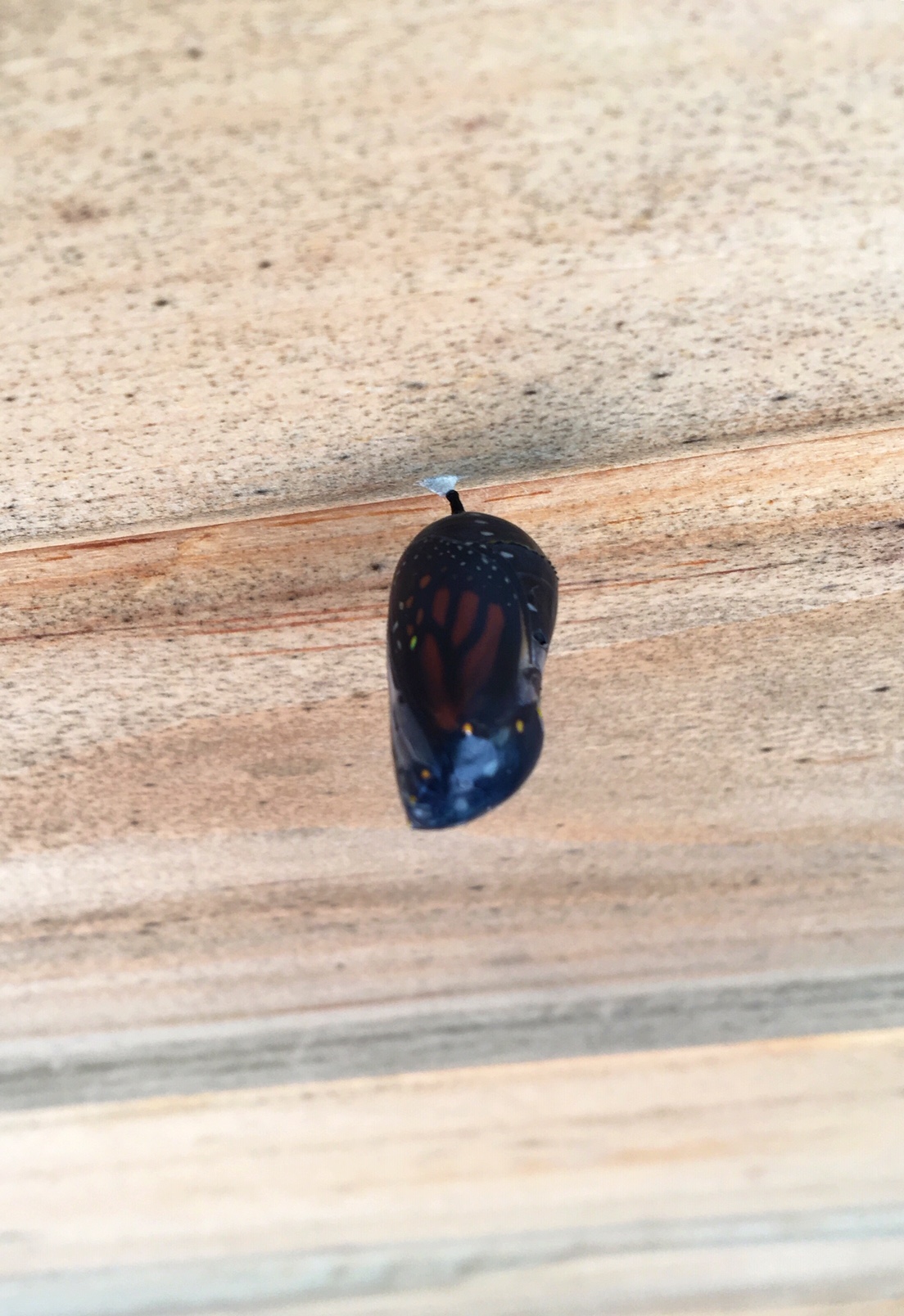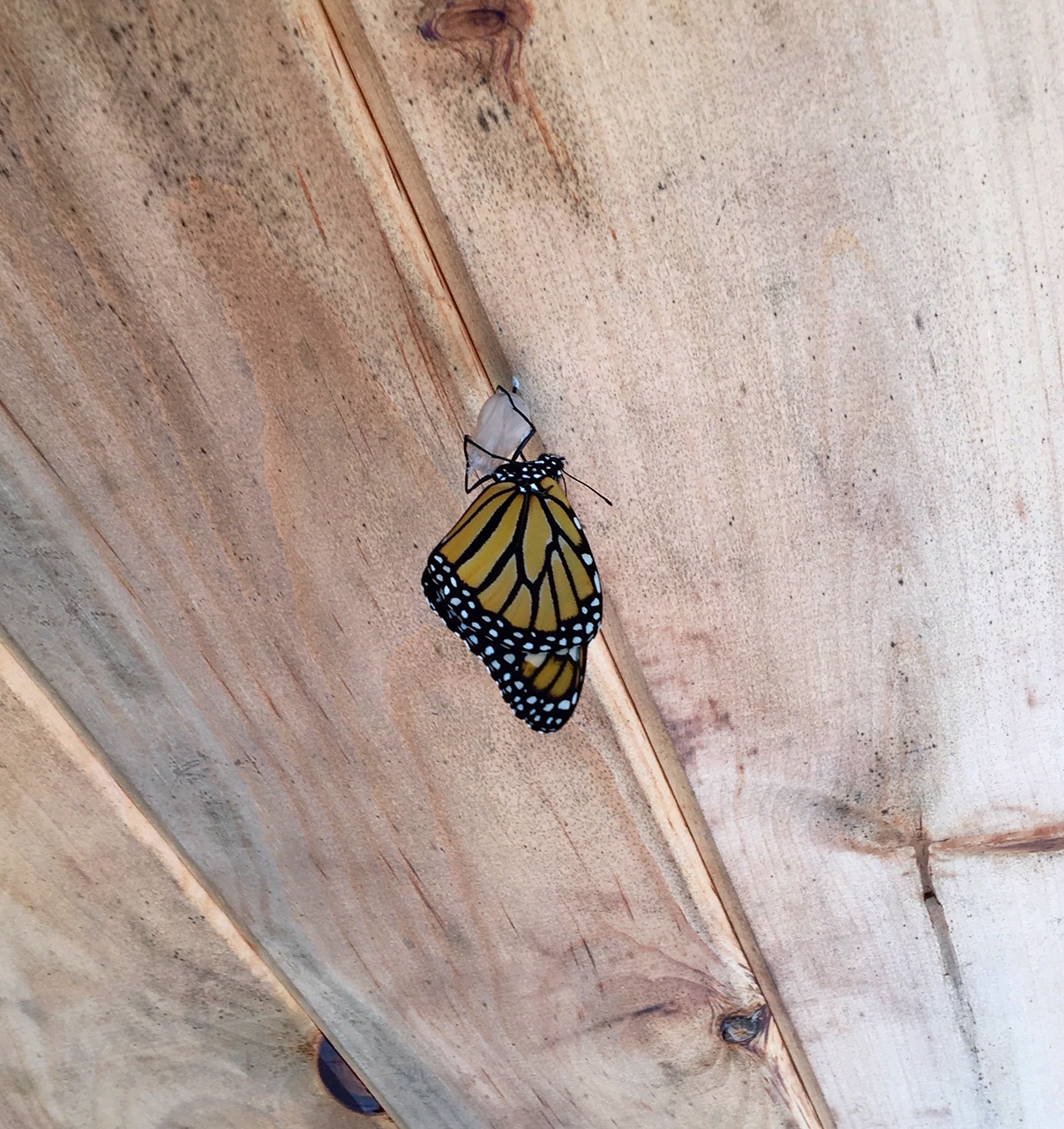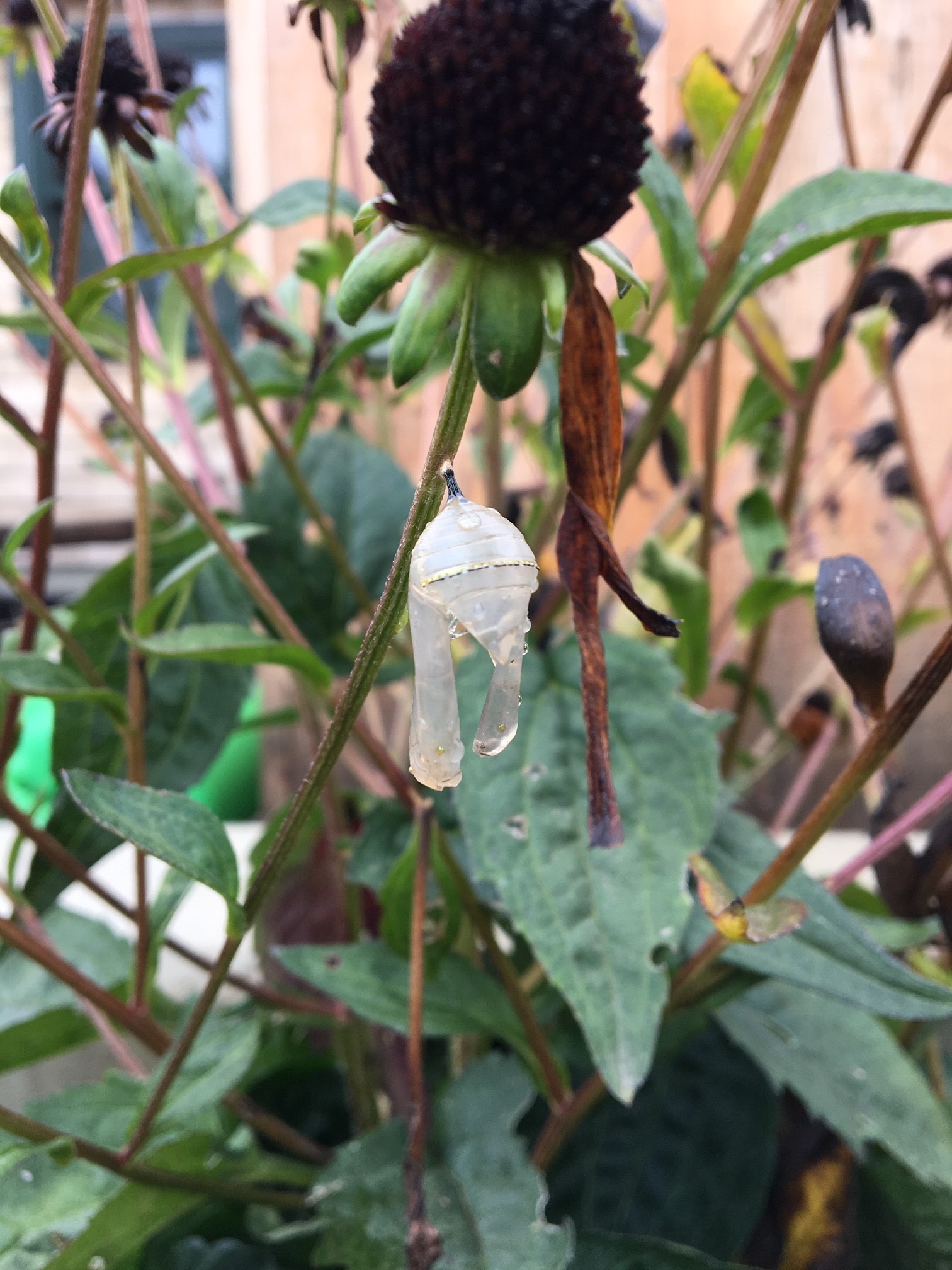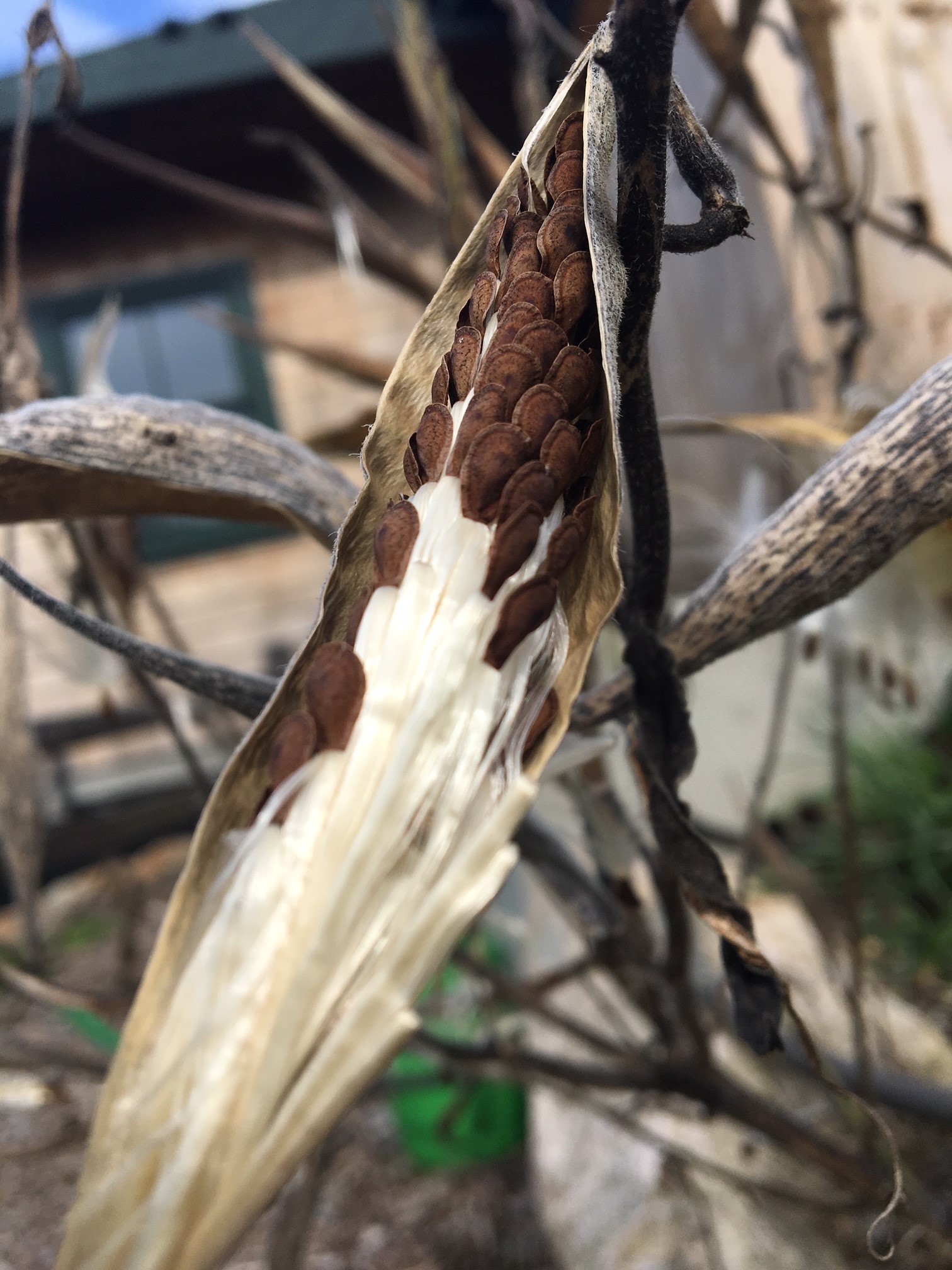By Roxey Lay, Membership and Communications Coordinator
A female monarch drinks nectar from a sedum plant at Davis-Douglas Farm.
Last summer, the staff at Davis-Douglas Farm were fortunate enough to witness, up-close, the life cycle of multiple monarch butterflies. If you’ve visited the office before, you’ll know we have multiple gardens on the property, full of gorgeous plants and flowers that attract a number of pollinators; one such plant variety is swamp milkweed. Although typically found along the edges of ponds, lakes, and streams, swamp milkweed also acts as a great addition to any garden, both for its flowers and its connection to the monarch butterfly. In September, staff members first noticed a chrysalis attached to the porch roof of the Barn. Then, turning our attention to the nearby garden, we noticed a small army of monarch caterpillars munching away on the milkweed. Over the following weeks, these caterpillars shifted from using the plants as a food source, to using them as a location to attach and pupate. Excited at the opportunity to witness their metamorphosis, we periodically checked on them, documenting how each chrysalis changed; we even managed to witness a newly emerged monarch drying its wings!
Swamp milkweed, at the end of the summer.
Witnessing the process these insects go through is not only fascinating, but it’s a great reminder of how we all rely on nature to grow and survive. Unfortunately, monarch butterflies have been greatly affected by human impact on the environment. Milkweed is critical to the survival of monarch butterflies, as it is their only food source and they cannot complete their life cycles without it. [1] The use of herbicides resistant crops and dramatic shifts in seasonal temperatures have led to the loss of milkweed breeding habitats across the country and a significant decline in monarch numbers. [2] Although not formally listed as endangered, the U.S. Fish & Wildlife Service was petitioned in 2014 to protect the monarch butterfly under the Endangered Species Act; the listing decision is expected to be issued June 2019. [3]
When Wildlands protects a land parcel, it’s not only for the benefit of the surrounding community, it also maintains habitat for many species, both rare/endangered and common, that rely on that particular ecosystem. These large protected areas are incredibly important in maintaining the natural integrity of the region; however, they aren’t the only habitat local animal populations rely on. Gardens also act as habitat for various insects and, along with supporting local land trusts like Wildlands Trust, are a way you can personally help make a difference in the health of the region using your own back yard. For example, by planting milkweed and native nectar plants, you can help mitigate the habitat loss of the monarch butterfly while providing an important food source for bees and other pollinators.
Another way you can make a difference is by learning more about how various animals rely on the region’s natural landscapes and your affect on both them and their habitat. In past years, Wildlands has hosted presentations at our Community Conservation Barn on the topic of honey bees, owls, bats, and more with the intention of educating the public on these animals and raising awareness of the connection between wildlands and wildlife. Recently, we started our Wildlife on the Move lecture series, offering attendees a chance to learn more about regionally seasonal animals, as well as an opportunity to ask an expert any questions they may have. This month features a presentation by Professor Steven Reppert, MD on the monarch butterfly, its migration cycle, and a discussion of current threats and conservation efforts. We are also partnering with the Herring Ponds Watershed Association and hosting a presentation by Brian Bastarache and his students from Bristol County Agricultural High School on the endangered red-bellied cooter; a species of turtle that is only found in Plymouth County!
It’s through the support and commitment of you and others in which we succeed in protecting the region’s natural spaces for both our own health and enjoyment and for the animals that rely on them to survive. For more information on our Wildlife on the Move lecture series and other upcoming programs, visit: https://wildlandstrust.org/events
See below for some photos from last summer at the office:




